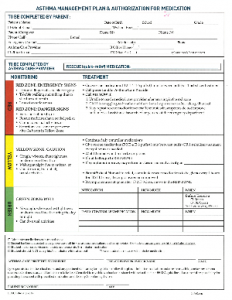The Indiana Joint Asthma Coalition (InJAC), led by Indiana Clinical and Translational Sciences Institute’s Connections IN Health team, completed and finalized the Indiana State Asthma Plan in August. This plan will be in effect for the next five years and will make a major impact on community health across the state.
“There really isn’t any asthma programming in the state,” said Rachael Casey, who is the director of InJAC. “Usually with asthma, you have pulmonologists, allergists and asthma specialists. We have a shortage of all three, especially in rural counties that have limited medical resources.”
The state plan starts by addressing the burden of asthma. About 10% of adults in Indiana have asthma. It’s also the most common chronic disease in children and disproportionately affects minority groups. Ten Americans die from asthma each day, according to the Asthma and Allergy Foundation of America. Even if it is not fatal, the condition can turn into an economic burden because of money spent getting emergency treatment.

[Sample asthma action plan]
Coalition members traveled across Indiana to determine what the three main priorities of this program should be. Those focus areas include reducing environmental triggers, improving quality of care and strengthening asthma programming infrastructure. Casey says reducing environmental triggers involves teaching staff at schools and day cares and helping them communicate more clearly with parents and families. The coalition is also recommending primary care physicians use asthma action plans. Those can be as simple as a sheet of paper that outlines signs to watch for in children while they’re at school or daycare and what treatment that child needs if they have an asthma attack. Other goals include improving education efforts, making medication more affordable and developing policies to help people with asthma.
“A lot of people really don’t think it’s a serious problem, especially among other chronic diseases like cardiovascular disease and diabetes,” said Casey. “Those tend to make people really concerned about health and they may do screenings or testing. I feel like with asthma, people know sometimes people can’t breathe, but I don’t think they realize how prevalent it is in the community or how many people actually die from asthma.”
Casey says the goal in the next few years is to make InJAC the go-to agency if someone needs resources or training in asthma.
